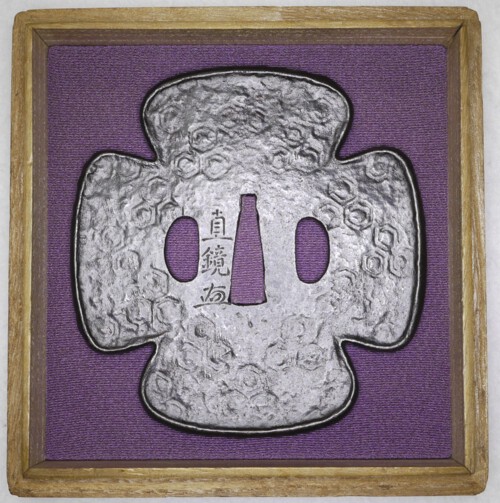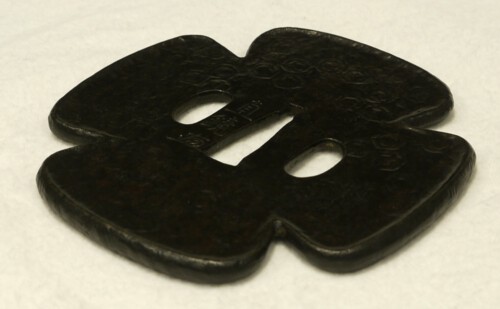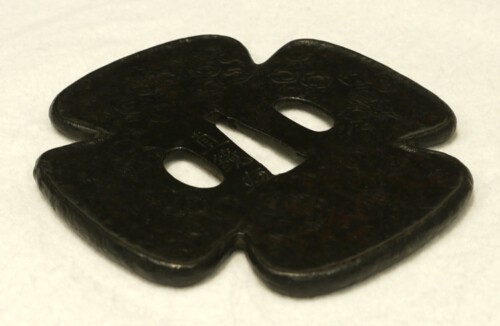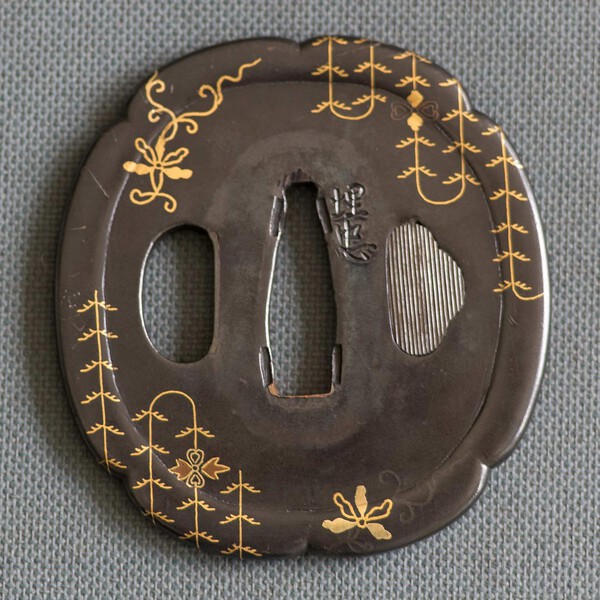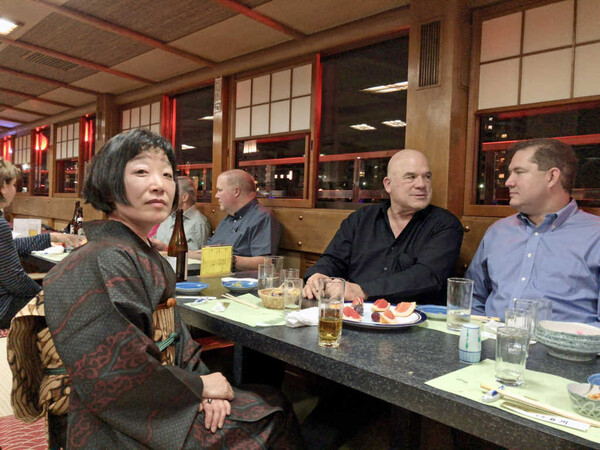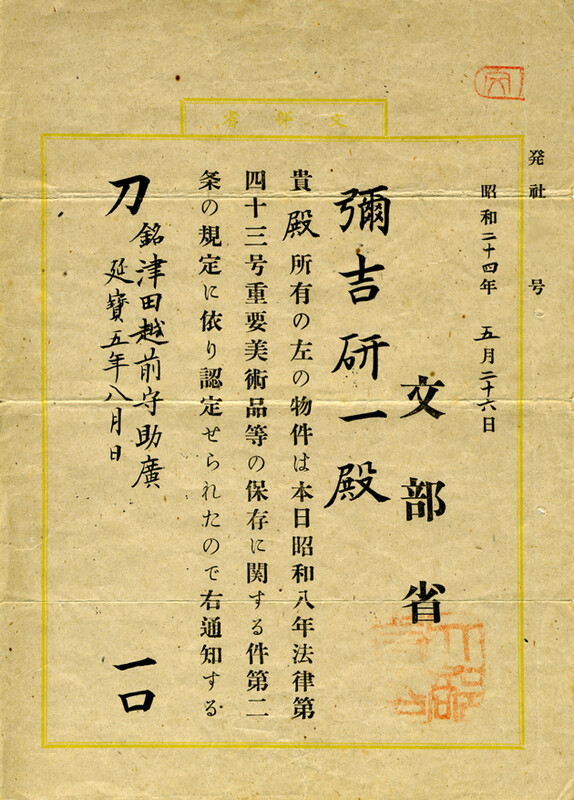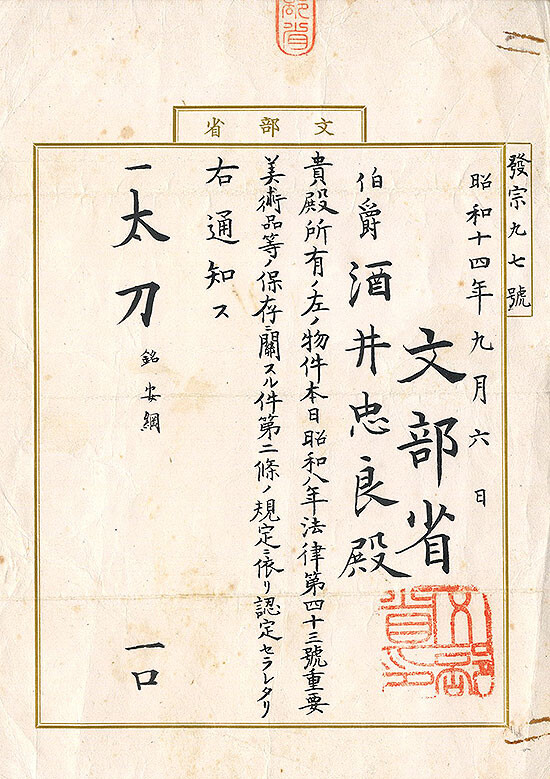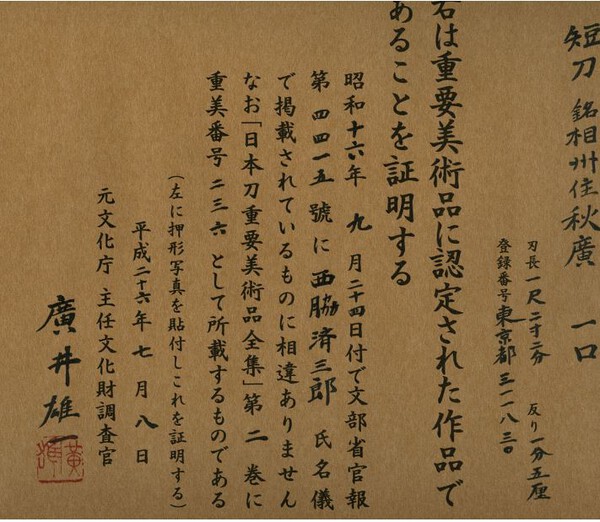-
Posts
3,242 -
Joined
-
Days Won
99
Content Type
Profiles
Forums
Events
Store
Downloads
Gallery
Everything posted by Guido
-
-
-
無銘 mumei (新々刀 shinshintō 海部 Kaifu) 長二尺三寸 length 2 shaku 3 sun
-
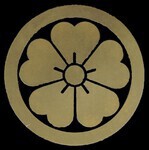
2017 Tokyo Dti Special Events
Guido replied to Keichodo's topic in Sword Shows, Events, Community News and Legislation Issues
Well, all of the above mentioned reasons didn't stop non-Japanese from visiting the DTI this year - I saw and spoke to people from France, Italy, Germany, Switzerland, Russia, China, Great Britain, Canada, Australia, and yes, quite a few from the US. It just seems that only a few were interested in the education and comradery the two events we're talking about provide. -

2017 Tokyo Dti Special Events
Guido replied to Keichodo's topic in Sword Shows, Events, Community News and Legislation Issues
I don't know what's wrong with the DTI visitors this year - we had maybe less than half the usual number of participants of both the study group and yakatabune! It needs 20 people to break even on the yakatabune booking, but only 16 signed up - that means Bob had to pay for 4 out of his own pocket!!! Make it up to him by buying lots of swords and fittings from him (at least that was my contribution ). Jeez, what has the world come to if I even have to bring my own wife along to fill another seat ... -

Dti Side Show
Guido replied to Henry Wilson's topic in Sword Shows, Events, Community News and Legislation Issues
In this case they are just completely over the top tsunagi. However, they might come in handy when encountering werewolves ... -
Sorry for the late reply – I’ve been busy with meeting quite a few people that are coming in for the DTI … Morohinerimaki seems always the style of choice for those who start out doing tsukamaki – especially those outside Japan and self-taught. And at first glance the method looks indeed straight-forward and simple enough. However, the correct hishigami and their placement, pre-stretching of the ito, and application of kusune need to be understood, preferable taught by someone who’s adept at it. I’m not a tsukamakishi, so I don’t know all the technical details, but when looking at a properly done tsuka, there will be no gaps between the strands of ito, and the tome isn’t pulled too close to the kashira – both often the result of pulling the ito too tight. I’ve attached a photo of morohinerimaki as I think it should look like.
-
1) I have a good idea about what your concerns are, but then again, I'm a certified tsukamaki-Nazi 2) That color is probably nando-iro 納戸色, kind of greenish-blue, depending on the light. A more "true" green would be fuka-midori 深緑; both are traditional tsukaito colors.
-

Robert Haynes Short Nbthk History
Guido replied to BIG's topic in Sword Shows, Events, Community News and Legislation Issues
In my experience, many people who are disgruntled with the NBTHK didn't get the attribution they hoped for at one point or another (or even always). As the German saying goes: "Wenn der Bauer nicht schwimmen kann, ist die Badehose schuld" (if the farmer can't swim, his trunks are to blame for it). -

Good 'o "changes In The Shape Of The Japanese Sword"
Guido replied to ken kata's topic in General Nihonto Related Discussion
Uhm, doesn’t the paper say 成重 Narishige instead of Morikuni 盛國 (or 盛重 Morishige)? -

2017 Tokyo Dti Special Events
Guido replied to Keichodo's topic in Sword Shows, Events, Community News and Legislation Issues
A little friendly bump . The Sword Study Group is an absolute must: great items, great lecture, great food & drinks. The yakatabune is equally worth attending. I'll attend both events, especially since Bob doesnt let me escape the cruise; he sent me the message And please don't let my presence hold you back from attending : I promise that I'll not sing karaoke again, and probably my wife will come, too, to keep me on a short leash anyhow . -
But that's exactly what they are saying. As Ray already pointed out, their website states Reading your posts is like following Trump on Twitter ...
-
王見 might read Ōmi, but I couldn’t find any smith by that name either. The province is Nōshū 濃州, btw.
-
Looks to me like an ear. Besides, I‘ve never seen oxen with manes.
-
Taking away material will always weaken a structure, not strengthen it. However, by carving a bōhi, the weight of the sword can be reduced without compromising its strength too greatly. The same approach is used in engineering in the shape of the I-beam.
-
That was my first thought, too, although he's usually depicted with a Chinese jiàn instead of a Japanese tachi.
-

Single Edo And Meiji Menuki Mounted On Pins
Guido replied to Surfson's topic in Auctions and Online Sales or Sellers
The waves are part of the symbolism of the dragon - his energy causes rain clouds to swirl and waves to form. -

Single Edo And Meiji Menuki Mounted On Pins
Guido replied to Surfson's topic in Auctions and Online Sales or Sellers
I'm not George, but ... ... the tiger represents the material or yin forces, and is bested by the dragon, which represents the spiritual or celestial or yang. The breath of the tiger creates the wind, and together with the clouds of the dragon, rain is created. Originally under Taoist teaching the tiger was a fearful, evil supernatural creature presiding over the west and autumn, both of which fall under the negative principle. Under Buddhist influence, the tiger assumed a positive force, its evil giving way to strength, nobility, and courage. In association with the dragon, however, it reverts back to its old Taoist negative principle. -
-
Let me put it this way: in almost 40 years of living on and off in Japan, I never came across any blade that was described as a kubikiri. I don’t know of any Japanese source or depiction of such a thing; the only book it is mentioned in is Stone’s “Glossary” (and although he did a marvelous job writing it, there are quite a few known errors and misconception in it). Can anyone point to any other reliable source, preferably a Japanese one? Oh, and the Japanese never practiced scalping – taking of headknots / mage, yes, but no scalps.
-
P.S.: Please note that I have no horse in this race. I’m not in the business of exporting swords of any designation/rank, and I’m certainly not going to comment on methods to circumvent the relevant Japanese laws, of which rumors are floating around for many years. There’s a reason why “regular” export permits are more carefully scrutinized recently; not only the tōrokushō number, but also measurements etc. are checked very thoroughly. Kudos to Fred for sticking to the law, his patience in waiting for the export permit, and willingness to risk that his sword wouldn’t have been allowed to leave Japan anymore.
-
Time to take a deep breath, and going back to facts. First of all we’ll have to keep in mind that not all kokuhō, jūyō bunakazai, and jūyō bijutsuhin are swords – there are many more paintings, ceramics, lacquer, armor, textiles and so on – 20% of all kokuhō are even buildings like castles, shrines, and temples. About 8,200 items received the jūbi status until 1950, the year that designation became obsolete; less than 1,100 of them are swords, sword fittings and mountings. Kokuhō, jūyō bunakazai, and jūyō bijutsuhin can be temporarily exported if they go on loan to a foreign museum; swords are not de-licensed in this case, they retain their original tōrokushō, and of course their government designation. Once a year a committee / shinsa gets together at the bunkachō to decide on export permits of jūyō bijutsuhin that are intended to leave Japan permanentely. If this permit is granted, the status is revoked, and in the case of swords, the tōrokushō has to be handed in. The criteria for granting an export permit are not on public record, and between 1950 and 2008, only 25 export permits for jūbi were issued. The attachments show an original monbushō certificate issued in 1939, and a replacement monbushō certificate issued in 1949.
-
Kind of.
-


